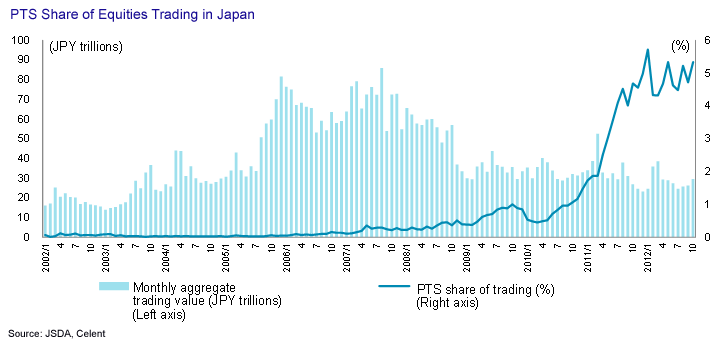Capital Market Trends in Japan, Part 2: Drivers of Innovation and a Market in Transition
Abstract
Japan’s market has yet to experience “big bang” structural reforms on par with the European and North American markets and the accompanying across-the-board tsunami of technological innovation. At the same time, deregulation of proprietary trading systems (PTS) operators and margin trading have rippled through the market and will significantly impact the new Japan Exchange and Japan’s capital markets.
In the report Capital Market Trends in Japan, Part 2: Drivers of Innovation and a Market in Transition, Celent examines the state of Japan’s markets and offers an outlook for the future in light of the tumultuous changes seen in Europe and North America.

We have reached a point where PTS are necessary for buy side entities to be sufficiently accountable to sponsors,” says Eiichiro Yanagawa, Senior Analyst with Celent’s Asian Financial Services Group and author of the report. “Faced with a market environment that offers little volatility, institutional investors are demanding from buy side entities provisions to optimize performance and risk. In response, buy side players are adopting more advanced investment strategies.”
Branching out from the report Capital Market Trends in Japan, Part 1: The Birth of a New Exchange, Part 2 examines best execution-related systems innovation and changes in market structure as well as the current state of trading technology innovation. This report features the results of interviews with multiple market participants. It analyzes capital markets trends in Japan and addresses perceived challenges and initiatives implemented by the firms interviewed.
This is the second in a two-part series examining Japan’s capital markets. This 40-page report contains 21 figures and 10 tables.

